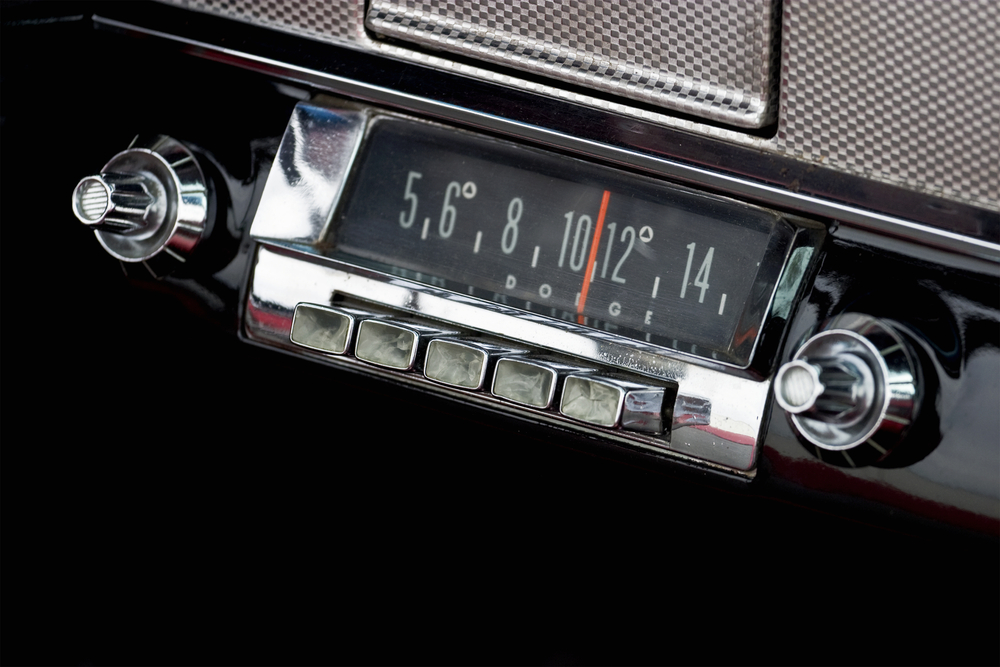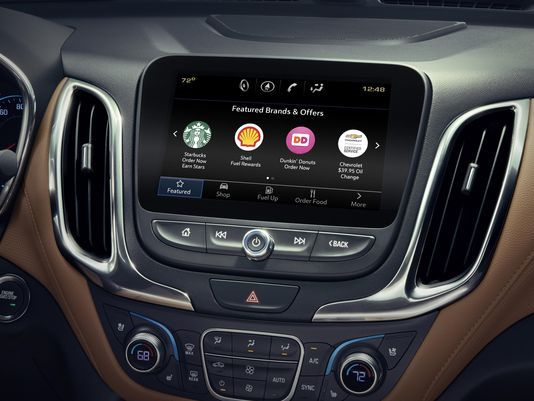
Is radio’s relationship with cars officially “on the rocks?”
It sure seems that way if you’re paying attention to the mountain-sized list of stories about automakers and related companies taking a sharp turn while heading in different directions when it comes to audio—and now video—readily available in cars.
Today, I’ve got a number of these stories for you, all of which support what is becoming a sad narrative for a long, mostly happy relationship that’s endured 90 or so years. But now, many of those same automakers—or OEMs—appear to be “moving in a different direction”—familiar words when you’re about to get dumped. I’m a believer that when you continue to run into story after story from the same theme, there’s a message being sent—if you’re perceptive enough to see it.
Why this matters is obvious. The car has been and is likely to always be the top listening location for broadcast radio. When outside forces come along to threaten and even change these conditions, it is something every owner, operator, and manager ought to be thinking about—a lot.
The truth is, broadcasters aren’t going to get a weepy “Dear radio” letter from the OEMs. It will be death by 100 cuts, one automaker after another breaking a norm or ending the inclusion of features that were once standard.
It’s natural at moments like this to want to analyze what went wrong. How could a breakup of this magnitude even happen to a storied partnership like radio and cars?
So, let me take you back a few years. Jacobs Media jumped into the auto fray shortly after our mobile app startup, jacapps, launched in the fall of 2008. A couple of trips to CES later and we were well on the way to seeing radio’s relationship with the car in a whole new light. It was like a long-running play where you traditionally see the performance from only one point of view—radio’s. And if you’re a broadcaster, that’s how you’ve always seen it. Year after year, decade after decade, new model after new model, all the automakers dutifully installed AM/FM radios in each and every model as standard equipment, thank you.
well on the way to seeing radio’s relationship with the car in a whole new light. It was like a long-running play where you traditionally see the performance from only one point of view—radio’s. And if you’re a broadcaster, that’s how you’ve always seen it. Year after year, decade after decade, new model after new model, all the automakers dutifully installed AM/FM radios in each and every model as standard equipment, thank you.
As a new vehicle shopper, you never even fathomed the concept of radio as an option or even more outlandish, a radio simply not being available in the new vehicle you were negotiating for with some sleazy car salesperson. There was a tacit understanding the manufacturer was giving you the radio at no extra price. It was a given, like the windshield wipers, the seat belts, or the emergency flashers.
Back in the day, automakers never even considered an alternative road where radio would be an optional feature—or unavailable all together. They didn’t need any research studies like we see in our industry trades each week proving radio’s continued viability as a choice when the public was behind the wheel. Everyone listened to the radio. You can hear it and feel it at every red light, hearing stations wafting out of the cars idling next to you.
Still, it was always a one-sided relationship—or love affair if you must. Because once you start watching the play from the OEM’s POV, the story changes radically. For radio, of course, it’s always been a win-win. The automakers mindlessly install our platforms in the most prime space in the vehicle—the center of the dashboard. And they’ve never sent us an invoice in all these years. And that’s in spite of the fact that only radio broadcasters have been able to monetize their AM/FM content in the car.
Because as Paul and I learned when we started talking to auto execs from different companies, representing a wide swath of corporate strata, once a vehicle rolls off an OEM’s assembly line, it is sold to one of their dealerships. And that’s the last dollar Toyota, Chevy, Land Rover, Ford, or Audi will ever see. From that point on, dealerships make the money on margins, service, extras, and on the buying and selling of used cars. The OEMs see none of that. And that mindset appears to be driving automakers to rethink those givens—in real time.

GM Marketplace
This is especially the case when analyzing their business models for their infotainment systems. GM has been most aggressive with its experimentation, launching and then folding their “Marketplace” platform that facilitated doing car-to-business direct commerce for commodities such as food and gas, among other things.
Later, GM also tried to package and sell their data—especially what people were listening to in their cars—as services, essentially putting them in competition with Nielsen and other ratings services. That one crashed and burned, too, but that hasn’t stopped the Detroit automaker from forging ahead.
Now they’re rolling their dice on eliminating the highly popular Apple CarPlay from their new vehicle lineup in favor of their own proprietary platform.
Ironically, I used to start my automotive presentations at conferences with the graphic you see below, making the point that automotive and radio naturally went together like a peanut butter and jelly sandwich—the whole being better and tastier than either by itself. The automakers have now been testing this theory, pushing back at the PB&J concept with a variety of tactics. Meantime, most radio broadcasters have been oblivious to the OEMs’ obvious testing of the boundaries.
automotive and radio naturally went together like a peanut butter and jelly sandwich—the whole being better and tastier than either by itself. The automakers have now been testing this theory, pushing back at the PB&J concept with a variety of tactics. Meantime, most radio broadcasters have been oblivious to the OEMs’ obvious testing of the boundaries.
The most obvious incursion has been their efforts to eliminate AM radio as standard in the vehicles they manufacture. This trench war has been ongoing for more than two years, eventually leading to legislation that is always close but still not up for a vote. Millions have been spent on both sides, lobbying legislators to go in one direction or the other. And yet, the fate of the AM Radio For Every Vehicle Act is still up in the air.
It’s just the tip of the iceberg. Earlier this week, Radio Ink published a story that should send chills up the towers of every broadcast station. In “CarPlay Ultra To Let Apple Control How Drivers Access AM/FM,” Cameron Coats looks at the implication of this new technology.

Photo: Apple via Radio Ink
In its new platform, Apple’s Ultra system will do much more than simply mirror a driver’s apps on the touchscreen. It will be the brains behind most functions in the cabin, including how a driver listens to an AM (hopefully, it’s still there) or an FM station. That’s because Ultra could circumvent the car’s tuner, forcing the vehicle’s system to access the station’s stream. I won’t bother to discuss the many implications those circumstances would mean to radio broadcasters.
Cameron mentions two other related stories that factor into new dashboard realities. The first is one I’ve talked about recently—SiriusXM‘s redesigned SXM app, the company is refocused on the car, experimenting with giving away the service in exchange for accepting ads on a new platform, similar to the way video streamers like Netflix have been building their subscriber base. That move should lead to new sampling, and better put, an injection of new cume in the car.
Then there’s Slate Auto, a new Troy, Michigan-based OEM offering a very inexpensive electric vehicle that could take the form of a truck, a car, on an SUV. That’s because its framework is a “skateboard chassis” where Slate can bolt on any body it likes. We first ran into this technology at CES a few years back, and now it’s a reality.
These new Slate EV’s—especially the truck—is expected to retail for around just $20,000. The catch—if you want to call it that—is no radio. Or infotainment system for that better. Buyers will simply bring their own content via their phones, tablets, or flash drives and plug in.

How will radio fare in an environment when there’s nothing preinstalled in the dash? Thanks to Slate’s obvious run at Gen Z consumers, we may be about to find out—fast.
The :90 video below tells you all you need to know about the Slate mindset when it comes to ordering and buying a new vehicle. If it catches on—and it could—it could end up as revolutionary as Tesla was a decade ago.
For the consumer, this will sadly mean having to ask more questions during a buying process that’s been moving rapidly online. They will now have to ask about dashboard features, standard, optional, and whether they’re available—period. Many will end up purchasing or leasing vehicles only to figure out later something is missing. Maybe a radio.
For radio, the implications are obvious. The quality of the stream and the experience itself will have to improve yesterday or radio will be left behind.
Radio’s “look” in the dashboard itself has already become critical. More stations will have to step up and start managing their metadata.
Xperi’s DTS AutoStage will be put to the test. Can the company continue to win over OEMs and radio operators? How can this platform be used to make broadcasters more relevant and present?
In 2025, radio’s relationship with the auto industry is in the spotlight…again. Can the two industries come together and find common ground in the dashboard?
Or is the breakup becoming official?
Originally published by Jacobs Media







